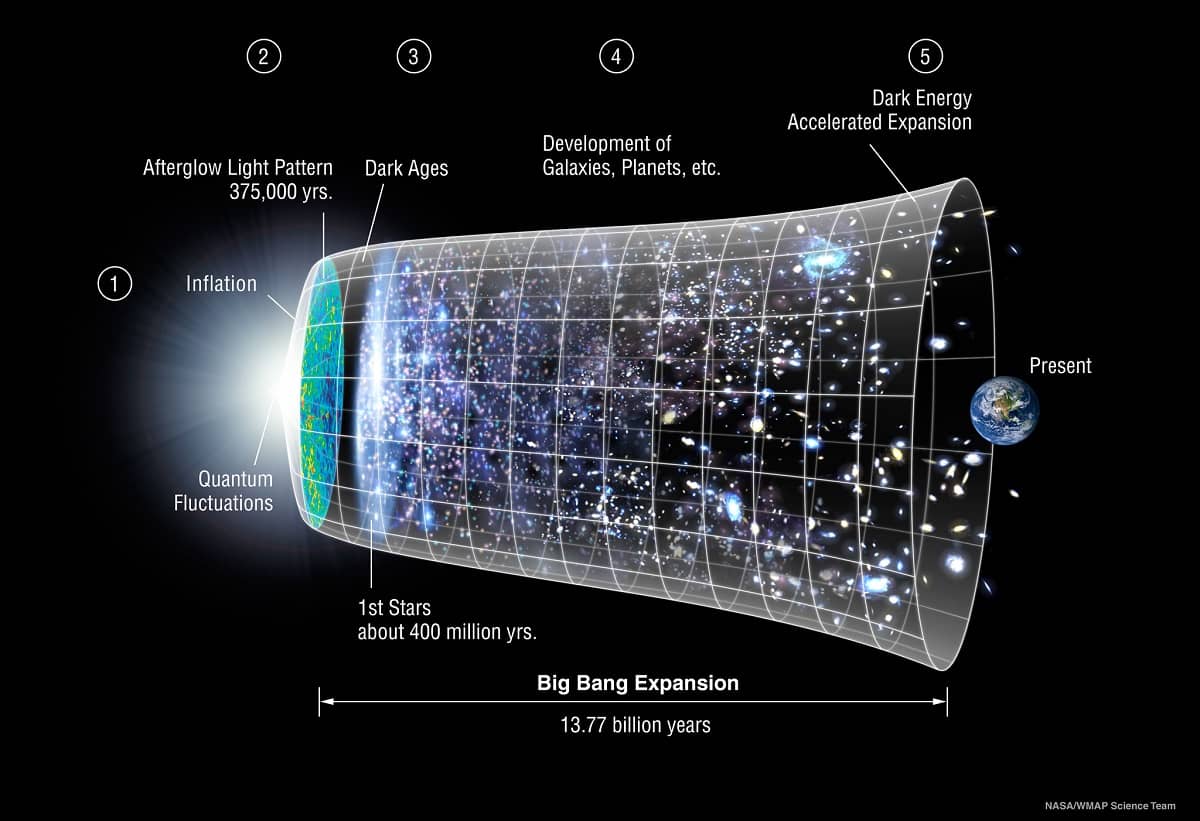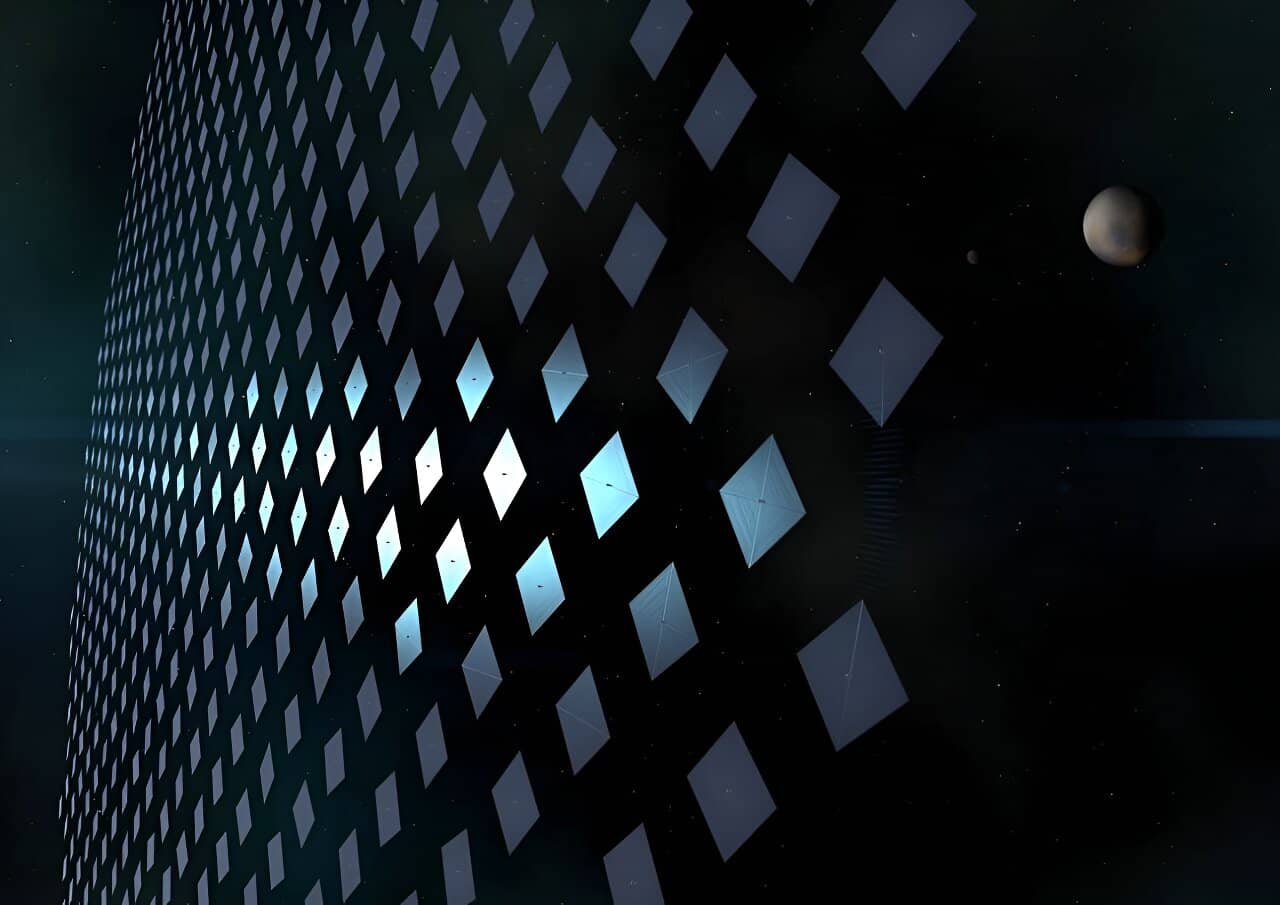There are billions of galaxies with billions of stars and celestial bodies inside of them, yet the universe still seems like a vast emptiness for the most part of it. However, that’s not entirely true, because of the existence of dark matter and dark energy.
Scientists have used sophisticated methods like particle colliders to look for dark matter, the invisible mass floating around galaxies. The term “dark energy” on the other hand refers to whatever is driving the universe to expand at an increasing rate as time passes. One of today’s greatest challenges for cosmologists is determining what that “something” is.
How do we know dark energy exists?
The universe is expanding, as astronomers have long suspected. Edwin Hubble observed galaxies moving in the early 1900s and developed Hubble’s Law, which connects a galaxy’s speed to its distance from us. Nevertheless, by the end of the 20th century, fresh discoveries of supernovae in distant galaxies revealed a paradox: the universe’s expansion isn’t constant, but rather is accelerating.
Exploding stars in faraway galaxies appear fainter than they should in a universe that is steadily expanding. The impacts of dark energy can even be seen in the cosmic microwave background, which is the relic of the first moments of clarity in the history of the universe. Dark energy is an essential element in current mathematical cosmology models to explain the observed universe.

Astrophysicists were surprised to discover that the expansion of the universe is accelerating. It meant that dark energy, in contrast to the attractive force of gravity, must produce some type of repulsive action, causing objects to separate from one another more quickly.
Astrophysicist Michael Turner first used the phrase “dark energy” in 1998 to correspond to the name of dark matter. It also implies that the accelerated expansion of the universe was a significant unanswered problem. Many scientists at the time believed that the cosmological constant, also known as lambda, which Albert Einstein introduced into general relativity to make the math work out, was the ideal explanation for dark energy because it was compatible with their models.
Why do we care about dark energy?
According to astrophysicists, the current paradigm in cosmology is the Lambda-CDM model, which claims that our universe is made up of a whopping 68 percent dark energy, 27 percent dark matter, and only 5 percent normal matter (everything that we have seen or touched). The nature of dark energy is among the many things that remain unanswered despite its ambitious attempt to include (and explain) all of cosmic history.
Dark energy is also a crucial deciding element in the eventual fate of our universe. If dark energy is simply the cosmic constant, without variation, our universe will continue to grow into a very lonesome place; in this case, all the stars outside of our small galaxy cluster would be invisible to us, being too red to be detected.
If dark energy becomes more powerful, it may result in an event called the Big Rip. This hypothetical cosmological model suggests that the matter of the universe, from stars and galaxies to atoms and subatomic particles, and even spacetime itself, will be progressively torn apart by the expansion of the universe until distances between particles become infinite. Perhaps dark energy weakens, our universe contracts once more, and the cycle is restarted with a fresh big bang. Unless they have a clearer understanding of the nature of dark energy, physicists won’t be able to tell which of these scenarios is likely to occur.
So, what exactly is dark energy?
Dark energy appears in the mathematics of the cosmos as Einstein’s cosmological constant, but this does not explain what physically causes the universe’s expansion to accelerate. Vacuum energy, a peculiar aspect of quantum physics, is a leading theory. This is produced when pairs of particles and their antiparticles abruptly appear and disappear, which is something that occurs almost constantly. It makes a compelling case for the existence of dark energy. However, there is a significant problem: The value of vacuum energy measured by scientists and the one predicted by theories are radically and puzzlingly different. This is known as the cosmological constant problem.
Over the years, cosmologists have proposed additional theories to explain dark energy. One, known as string theory, proposes that the universe is composed of minuscule particles that resemble strings and that the value of dark energy that we observe is merely one option among other multiverses. Since we couldn’t survive in a universe with different values of the cosmological constant, we ended up in this one, even if it’s an outlier relative to the others, according to a lot of physicists.
Other scientists have thought of completely altering Einstein’s equations for general relativity, but the majority of those attempts have been disproved by data from LIGO’s groundbreaking gravitational wave observations.
New observations of the universe may help astrophysicists better understand the nature of dark energy, but they cannot resolve everything. Even if scientists measure the qualities of dark energy with infinite precision, they may still be unable to identify it. They essentially require a true theoretical breakthrough, but these things are unpredictable; it could take one, 10, or even a hundred years.





